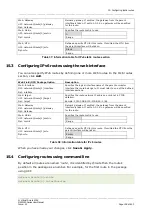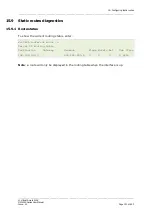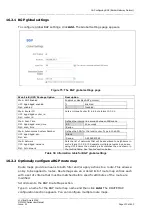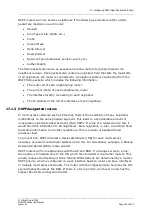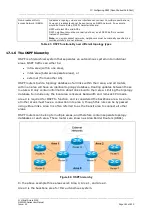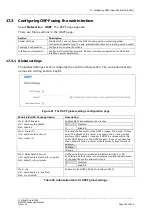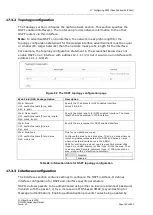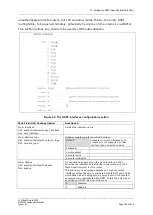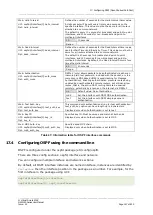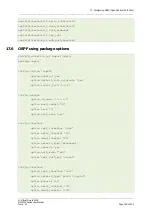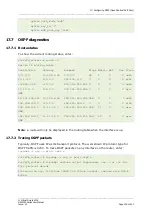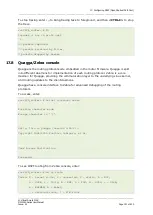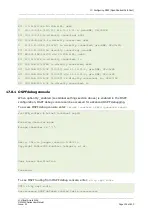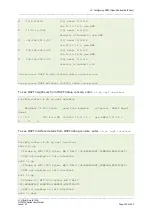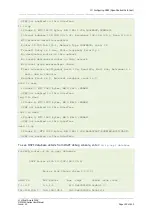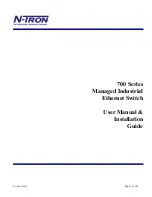
17: Configuring OSPF (Open Shortest Path First)
_______________________________________________________________________________________________________
_______________________________________________________________________________________________________
© Virtual Access 2018
GW2020 Series User Manual
Issue: 2.1
Page 141 of 423
17.1.4
OSPF neighbour states
Neighbour adjacencies will progress through several states, described in the table below.
State
Description
Down
Indicates that no Hellos have been heard from the neighbouring router
Init
Indicates a Hello packet has been heard from the neighbour, but two-way
communication has not yet been initialized.
2-Way
Indicates that bidirectional communication has been established.
Recall that Hello packets contain a neighbour field. Thus, communication is
considered 2-Way once a router sees its own Router ID in its neighbour’s Hello
Packet. Designated and Backup Designated Routers are elected at this stage.
ExStart
Indicates that the routers are preparing to share link state information.
Master/slave relationships are formed between routers to determine who will
begin the exchange.
Exchange
Indicates that the routers are exchanging Database Descriptors (DBDs). DBDs
contain a description of the router’s Topology Database. A router will examine
a neighbour’s DBD to determine if it has information to share.
Loading
Indicates the routers are finally exchanging Link State Advertisements,
containing information about all links connected to each router. Essentially,
routers are sharing their topology tables with each other.
Full
Indicates that the routers are fully synchronized. The topology table of all
routers in the area should now be identical. Depending on the role of the
neighbour, the state may appear as:
Full/DR
Indicating that the neighbour is a Designated Router (DR)
Full/BDR
Indicating that the neighbour is a Backup Designated Router
(BDR)
Full/DROther Indicating that the neighbour is neither the DR nor BDR. On
a multi-access network, OSPF routers will only form Full
adjacencies with DRs and BDRs. Non-DRs and non-BDRs will
still form adjacencies, but will remain in a 2-Way State. This
is normal OSPF behaviour.
Table 42: Neighbour adjacency states
17.1.5
OSPF network types
OSPF’s functionality is different across several different network topology types.
State
Description
Broadcast Multi-Access
Indicates a topology where broadcast occurs. Examples include Ethernet,
Token Ring and ATM. OSPF characteristics are:
OSPF will elect DRs and BDRs
Traffic to DRs and BDRs is multicast to 224.0.0.6. Traffic from DRs and BDRs
to other routers is multicast to 224.0.0.5
Neighbours do not need to be manually specified.
Point-to-Point
Indicates a topology where two routers are directly connected. An example
would be a point-to-point T1. OSPF characteristics are:
OSPF will not elect DRs and BDRs
All OSPF traffic is multicast to 224.0.0.5
Neighbours do not need to be manually specified
Point-to-Multipoint
Indicates a topology where one interface can connect to multiple destinations.
Each connection between a source and destination is treated as a point-to-
point link. An example would be point to Point-to-Multipoint Frame Relay.
OSPF characteristics are:
OSPF will not elect DRs and BDRs.
All OSPF traffic is multicast to 224.0.0.5.
Neighbours do not need to be manually specified.


